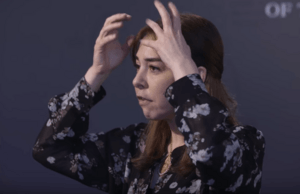Dina Katabi facts for kids
Quick facts for kids
Dina Katabi
|
|
|---|---|
 |
|
| Born |
Damascus, Syria
|
| Nationality | Syrian American |
| Alma mater | Massachusetts Institute of Technology |
| Known for | Congestion control, Sparse Fourier transform, wireless network, X-ray vision |
| Awards | ACM Prize in Computing (2017) MacArthur Fellowship (2013) Association for Computing Machinery Fellow (2013) Grace Murray Hopper Award (2013) IEEE Communication Society William R. Bennett Prize (2009) Sloan Fellowship from the Alfred P. Sloan Foundation (2006) Career Award from the National Science Foundation (2005) Sprowls Dissertation Award (2003) from MIT ACM Doctoral Dissertation Award Honorable Mention (2003) from ACM |
| Scientific career | |
| Fields | Computer science, electrical engineering |
| Institutions | Massachusetts Institute of Technology |
| Thesis | Decoupling Congestion Control and Bandwidth Allocation Policy With Application to High Bandwidth-Delay Product Networks (2003) |
| Doctoral advisor | David Clark |
Dina Katabi (Arabic: دينا قَتابي) is a brilliant scientist and professor at MIT. She teaches about computers and electricity. She also leads the MIT Wireless Center. Forbes magazine even called her one of the most important women engineers in the world!
Contents
Early Life and Education
Dina Katabi grew up in Damascus, Syria. Her family were all doctors. At first, she thought she would become a doctor too. But in college, she found something she loved even more: computer science!
She earned her first degree in electrical engineering from the University of Damascus in 1995. Then, she moved to MIT in the United States. There, she earned her master's degree in Computer Science in 1998. She completed her Ph.D. in computer systems networking in 2003.
After finishing her studies, Dr. Katabi joined the faculty at MIT. She is now a professor in the Department of Electrical Engineering and Computer Science. She also helps lead the MIT Center for Wireless Networks and Mobile Computing. She is a main researcher at MIT's Computer Science and Artificial Intelligence Laboratory.
Amazing Wireless Research
Dr. Katabi's research focuses on how signals, machine learning, and health connect. She first worked on making computer networks more reliable. This included solving problems like "congestion control," which is like a traffic jam for data.
Seeing Through Walls with Radio Waves
Later, Dr. Katabi and her team started using machine learning and signals to study the human body. They found a way to use radio signals, like those from Wi-Fi, to "see" how our bodies move. These signals bounce off people. By analyzing these bouncing signals, her team could measure things like breathing and heart rates. They could even tell how someone was sleeping or feeling! The best part is, people don't need to wear any special sensors.
AI for Health Monitoring
Dr. Katabi's most recent work combines medicine with artificial intelligence (AI). Her team developed a system that can help diagnose diseases like Parkinson's. This system uses AI to analyze breathing patterns.
In 2025, her research group showed that an AI system could detect Parkinson's disease. It used breathing data collected while people slept. This study looked at data from over 7,600 people. The AI could tell who had Parkinson's and even estimate how severe it was. This offers a simple way to check on people's health from home.
Her lab continues to create devices that use radio waves to track health. These devices look like Wi-Fi routers. They can monitor many health conditions. This includes Alzheimer's disease, autoimmune disorders, and other brain-related illnesses.
Awards and Recognition
Dr. Katabi has received many important awards for her work.
- In 2012, her work on "Sparse Fourier Transforms" was named one of the top 10 breakthroughs of the year by Technology Review.
- In 2013, she won the Grace Murray Hopper Award. This award recognizes young computer science professionals who have done outstanding work.
- Also in 2013, she received a MacArthur Fellowship. This is a special award given to talented people in many fields. She also became a fellow of the Association for Computing Machinery.
- In 2014, her work on X-ray vision was highlighted. It was chosen as one of "50 ways that MIT has transformed computer science."
- In 2015, she even presented her startup idea to President Obama at a White House event.
- In 2017, she was chosen to be a member of the National Academy of Engineering. This was for her important work on network congestion and wireless communication. In the same year, she received the ACM Prize in Computing. This award recognized her amazing contributions to wireless networking.
- In 2022, she became a member of the American Academy of Arts and Sciences.
- In 2023, Dr. Katabi was elected to the National Academy of Sciences. She also received an honorary doctorate from the American University of Beirut. This recognized her important work in wireless networks.
- In 2024, she spoke at the MIT Women’s Conference. She showed how AI-powered wireless signals can check sleep quality, breathing, and movement at home. This is very helpful for people with long-term illnesses. The U.S. Department of State also featured her work. They highlighted her AI tools that monitor health to help diagnose and manage conditions like Parkinson’s and Alzheimer’s.

